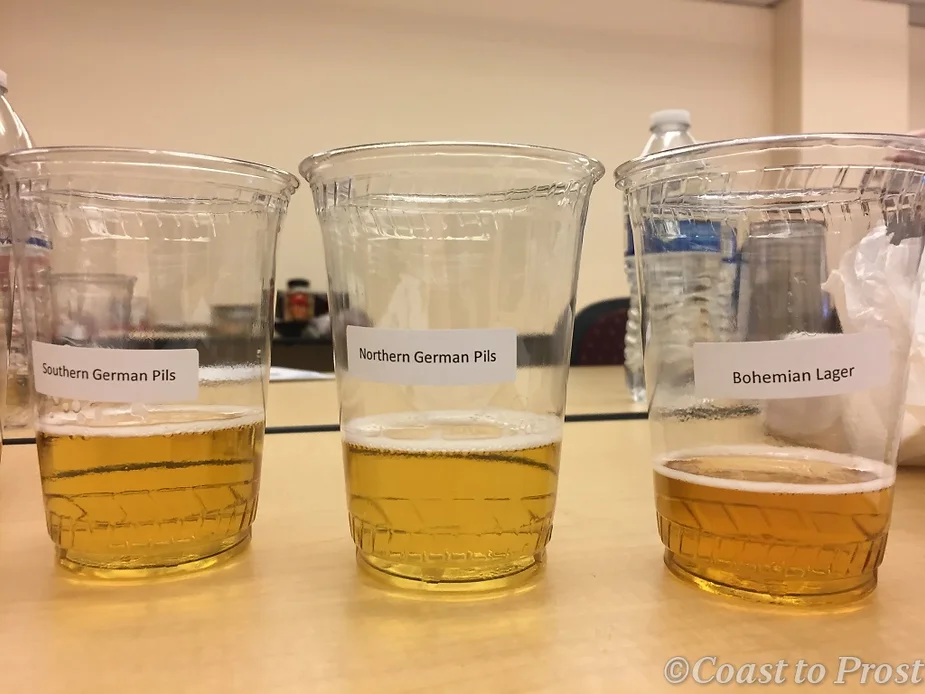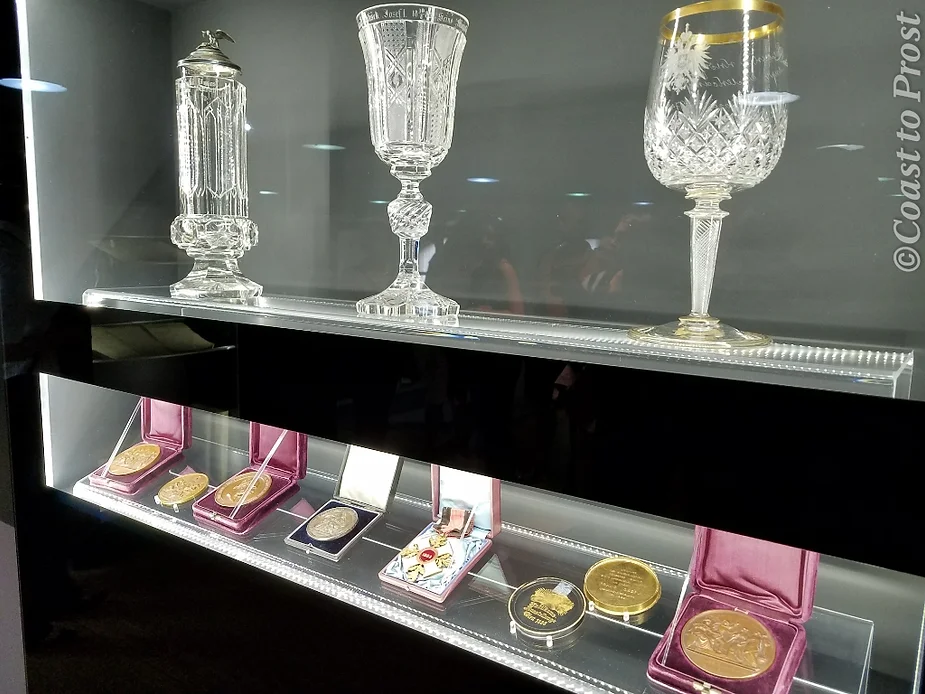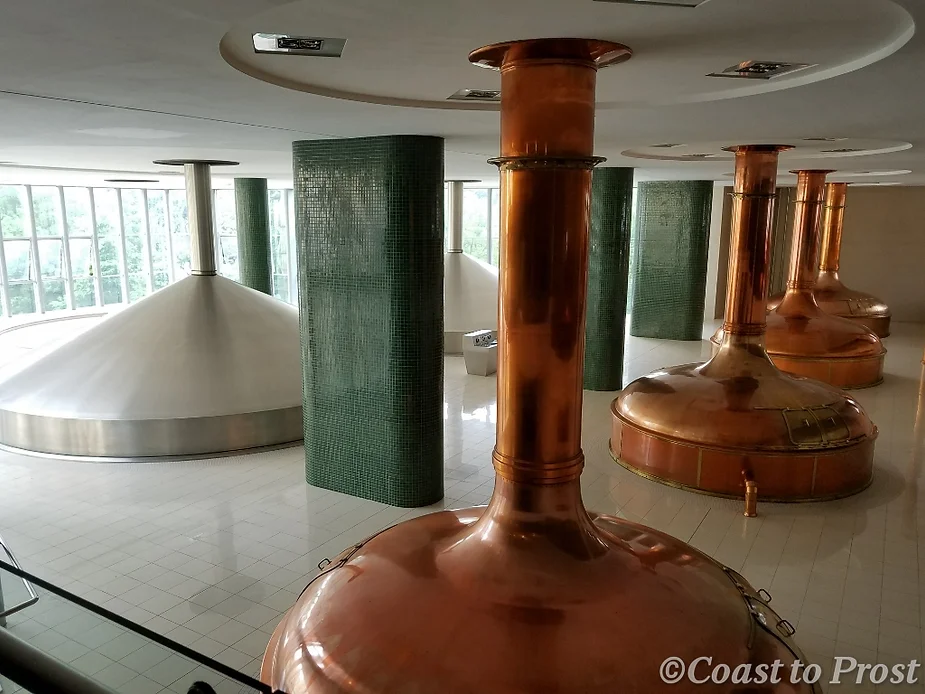A Weekend Class Inspires a Portland Beer Writer to Visit the Pilsner Urquell Brewery
I didn’t plan to go to Plzeň -- Pilsen in German -- during my trip to Europe this summer. In fact, I was specifically focused on researching and exploring the emerging craft beer scene in the Balkans and eastern Europe. But when I had to find a way to get from Munich, Germany to Szczecin, Poland in early June, I realized that if I went by train I wouldn’t have to deviate too far off the most direct route to visit the world-famous Pilsner Urquell brewery.
First brewed in 1842 at the newly built Burghers’ Brewery in Plzeň, the beer was created as a better tasting and higher quality alternative to the top-fermented dark ales that were widely available at the time. In addition, the brewery allowed the burghers (citizens) to retain control of the entire brewing and sales process, and to better compete in the local market. The meaning of the beer’s name is the same whether you use the German urquell or the Czech prazdroj; it translates as “pilsner from its original source.” This year is the 175th anniversary of the first batch of golden lager brewed in the Burghers’ Brewery. It was high time that I paid my respects at the birthplace of pilsner beer.
I entered the expansive Plzeňský Prazdroj complex through the historic Jubilee Gateway built in 1892 to commemorate the 50th anniversary of the Burghers’ Brewery. The complex includes a visitor center, souvenir shop, restaurant, beer garden, conference center and administrative buildings, along with the brewery and packaging hall. I showed up without a tour reservation which I don’t advise, especially during the busy summer months. The number of daily tours in English varies according to the season; there were four when I visited on a Monday in early June. However, the first tour was already fully booked, so I had to wait for the next available one that afternoon. After browsing around the visitor center and gift shop, I settled in for a pint in the beer garden and watched a steady stream of tourists entering the complex.
Finally it was time to meet up with the tour guide. Our group of almost 40 people included visitors from every continent except Antarctica. The tour started with our guide giving us a brief history of the brewery and a look at some important documents and awards from the late 1800s.
Our next stop was the 100 liter pilot brewery, which is used for training employees, testing ingredients, brewers experiments, and to make special batches like a beer for the President of the Czech Republic, Miloš Zeman. From there we took an environmentally friendly bus running on CNG (compressed natural gas) to the packaging hall. Completed in 2006, the 20,000 square meter building houses state of the art filtration and pasteurization technology, two new packaging lines capable of processing 120,000 bottles and 60,000 aluminum cans per hour, and a distribution warehouse.
The bus took us back to the learning center where we rode the largest passenger lift in the Czech Republic to a panoramic cinema and watched a film about Pilsner Urquell beer production as the floor rotated. Then we entered the sensory exposition hall which features hands-on exhibits of the special ingredients used in the beer including Czech barley malt, Žatec (Saaz) hops, soft water from Pilsen and special brewer’s yeast.
Next we entered the brewery, first admiring the early 20th century brewhouse with copper kettles dating back to 1931, then the modern one built in 2004. Below the brewery is an exhibit on the people (brewers, maltsters, coopers, etc.) that have had a hand in making Pilsner Urquell what it is today. I was amazed to see the original copper kettle in which the first batch of golden lager was brewed in 1842.
Finally we descended into the damp, cool underground cellars which comprise almost nine kilometers in length all together. The constant 7℃ year round temperature is perfect for lager fermentation in open wooden vats and maturation in oak casks. Since 1992, only a small amount of beer is made this way; the rest is kept in modern stainless steel and glycol-jacketed conical fermenters.
After emerging from the cold darkness of the tunnels, I couldn’t resist having another pint in the sunshine of the beer garden. While it was good, it didn’t compare to the freshness and sensory pleasure of drinking Pilsner Urquell straight from the source.
For more information and to book a tour of the Pilsner Urquell brewery, please click here: Plzeňský Prazdroj
Footnote
I was awarded a scholarship from Pink Boots Society to attend the Origins of Beer Flavors and Styles course. This article is part of my Pay-It-Forward obligation requiring scholarship recipients to pay forward the knowledge they gained from their scholarship course within six months of completing the course.
For more information about Pink Boots Society, please click here: https://www.pinkbootssociety.org/











